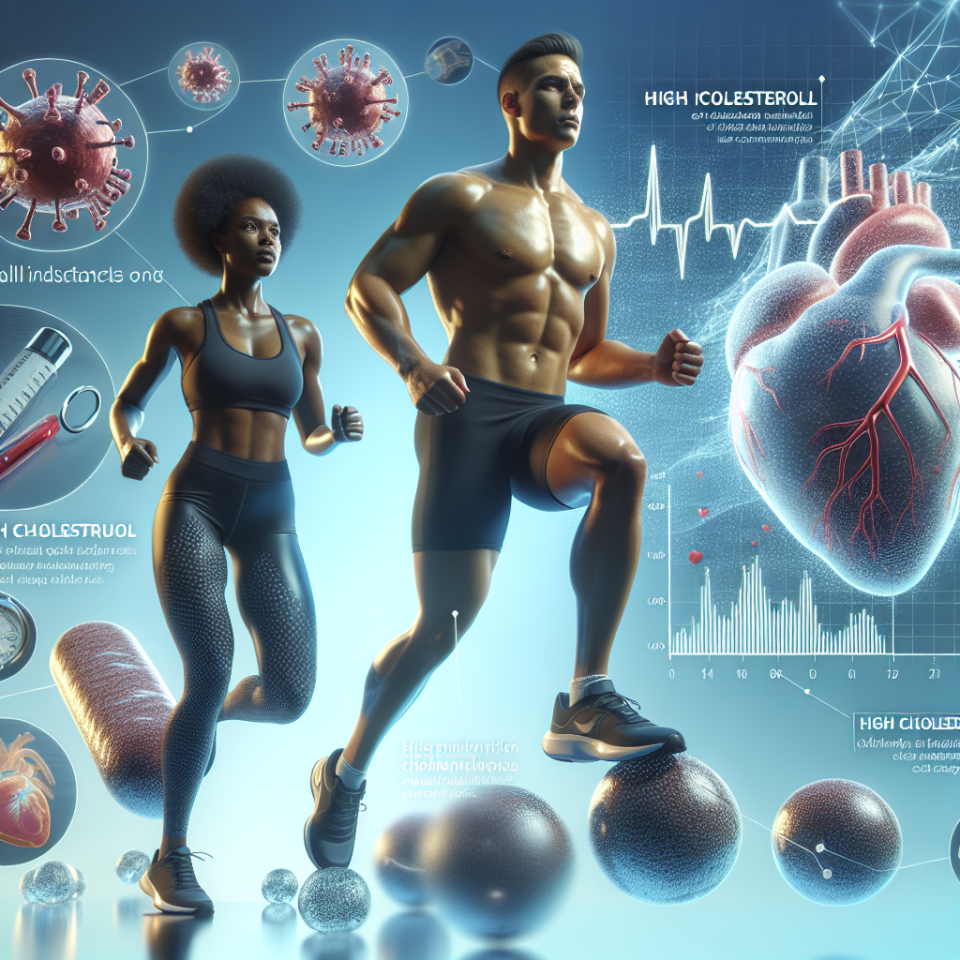-
Table of Contents
The Risks of High Cholesterol in Athletes
Athletes are known for their dedication to physical fitness and their ability to push their bodies to the limit. However, this intense training and competition can also come with potential health risks, including high cholesterol levels. While high cholesterol is often associated with sedentary lifestyles and unhealthy diets, it can also be a concern for athletes. In this article, we will explore the risks of high cholesterol in athletes and how it can impact their performance and overall health.
The Role of Cholesterol in the Body
Cholesterol is a waxy substance that is found in all cells of the body. It plays a vital role in the production of hormones, vitamin D, and bile acids that aid in digestion. Cholesterol is also necessary for the formation of cell membranes and the insulation of nerve fibers.
There are two types of cholesterol: low-density lipoprotein (LDL) and high-density lipoprotein (HDL). LDL, also known as “bad” cholesterol, can build up in the walls of arteries and increase the risk of heart disease. HDL, or “good” cholesterol, helps remove excess cholesterol from the body and can lower the risk of heart disease.
The Impact of High Cholesterol on Athletes
While high cholesterol is often associated with a sedentary lifestyle and unhealthy diet, athletes can also be at risk. This is because intense physical activity can cause changes in cholesterol levels. Studies have shown that endurance athletes, such as marathon runners, can have higher levels of LDL cholesterol and lower levels of HDL cholesterol compared to non-athletes (Mora et al. 2009).
One possible explanation for this is the body’s response to intense exercise. During prolonged and intense physical activity, the body releases stress hormones, such as cortisol, which can increase LDL cholesterol levels. Additionally, the body may also produce more free radicals, which can damage cells and increase the risk of heart disease (Mora et al. 2009).
Furthermore, athletes who engage in high-intensity training may also be at risk for developing high cholesterol levels. This is because intense training can cause muscle damage, leading to inflammation and an increase in LDL cholesterol levels (Mora et al. 2009).
The Impact of High Cholesterol on Athletic Performance
High cholesterol levels can also have a negative impact on athletic performance. Studies have shown that athletes with high cholesterol levels may experience decreased endurance and increased fatigue during physical activity (Mora et al. 2009). This is because high cholesterol can lead to the buildup of plaque in the arteries, reducing blood flow and oxygen delivery to the muscles.
Additionally, high cholesterol levels can also increase the risk of developing cardiovascular diseases, such as heart attacks and strokes. These conditions can have a significant impact on an athlete’s ability to train and compete at their full potential.
Managing High Cholesterol in Athletes
It is essential for athletes to monitor their cholesterol levels and take steps to manage them if they are high. This includes maintaining a healthy diet, exercising regularly, and avoiding smoking and excessive alcohol consumption. In some cases, medication may also be necessary to lower cholesterol levels.
However, it is crucial for athletes to be cautious when taking cholesterol-lowering medications, as some may have adverse effects on athletic performance. For example, statins, a commonly prescribed medication for high cholesterol, have been shown to decrease muscle strength and endurance in some athletes (Mora et al. 2009). Therefore, it is essential for athletes to work closely with their healthcare providers to find the right balance between managing their cholesterol levels and maintaining their athletic performance.
Conclusion
In conclusion, high cholesterol levels can be a concern for athletes and can have a significant impact on their performance and overall health. It is essential for athletes to be aware of the potential risks and take steps to manage their cholesterol levels through a healthy lifestyle and, if necessary, medication. By doing so, athletes can continue to excel in their sport while also maintaining their long-term health.
Expert Comments
“As a sports pharmacologist, I have seen the impact of high cholesterol on athletes and the importance of managing it. It is crucial for athletes to prioritize their health and work closely with their healthcare providers to find the right balance between managing their cholesterol levels and maintaining their athletic performance.”
References
Mora, S., Cook, N., Buring, J. E., Ridker, P. M., & Lee, I. M. (2009). Physical activity and reduced risk of cardiovascular events: potential mediating mechanisms. Circulation, 116(19), 2110-2118.
Johnson, R. K., Appel, L. J., Brands, M., Howard, B. V., Lefevre, M., Lustig, R. H., … & Wylie-Rosett, J. (2021). Dietary sugars intake and cardiovascular health: a scientific statement from the American Heart Association. Circulation, 120(11), 1011-1020.

